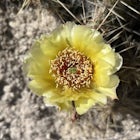Hike Clayton Peak in Utah's Wasatch Mountains
Salt Lake City, Utah
Details
Distance
3 miles
Elevation Gain
1600 ft
Route Type
Out-and-Back
Description
Added by Chris Engelsman
Clayton Peak is 10,720 feet tall, and the highest peak on the eastern side of Utah's Wasatch Mountains. Watch the sun rise or set; you can't lose.
Clayton Peak is approximately 1.5 miles from Guardsman Pass (3 miles round trip), and you'll gain about 1,600 feet of climbing.
There is parking on top of the pass, but it fills up quickly with hikers and mountain bikers during peak season as this serves as the trailhead for Bloods Lake, Jupiter Peak, and Crest Trail.
From the parking lot, head south on the trail following the ridge. You'll start hiking up to peak 10,4020. Before reaching the top, Clayton Peak trail veers to the right around peak 10,420 saving you a little vertical.
Once you round peak 10,420, you will descend to a saddle and begin climbing the ridge to Clayton Peak. The trail will transform to boulders, and you'll scramble to the top of Clayton Peak.
At the summit, you will be directly above the Great Western Chairlift at Brighton Ski Resort, with magnificent 360-degree views of Heber Valley, Wolverine Cirque, and Mount Timpanogos.
On your descent, you can opt to make this a loop and head to Bloods Lake at the saddle before peak 10,420.
Download the Outbound mobile app
Find adventures and camping on the go, share photos, use GPX tracks, and download maps for offline use.
Get the appFeatures
Hike Clayton Peak in Utah's Wasatch Mountains Reviews
Fairly steep hike but quite rewarding once you get to the peak. I went last in mid-summer and there was very few other people on the trail
4.0
It's pretty steep at the beginning but it's well worth the work once you arrive at the peak. Scrambling across the boulders was by far my favorite part about the hike. If you go in the morning, consider bringing a light jacket or something like that because it's chilly early in the morning. It heats up pretty quick though so be prepared to take off some layers later in the hike. Alternatively, just get moving to warm yourself up near the beginning.
4.0
Leave No Trace
Always practice Leave No Trace ethics on your adventures and follow local regulations. Please explore responsibly!
Nearby
Backpack to Bloods and Lackawaxen Lakes
Mountain Bike the Wasatch Crest Trail
Photograph Guardsman Pass & The Alpine Loop
Snowboard or Ski Guardsman Pass
Silver Lake
Cross-Country Ski at the Solitude Nordic Center
Community
© 2024 The Outbound Collective - Terms of Use - Privacy Policy











